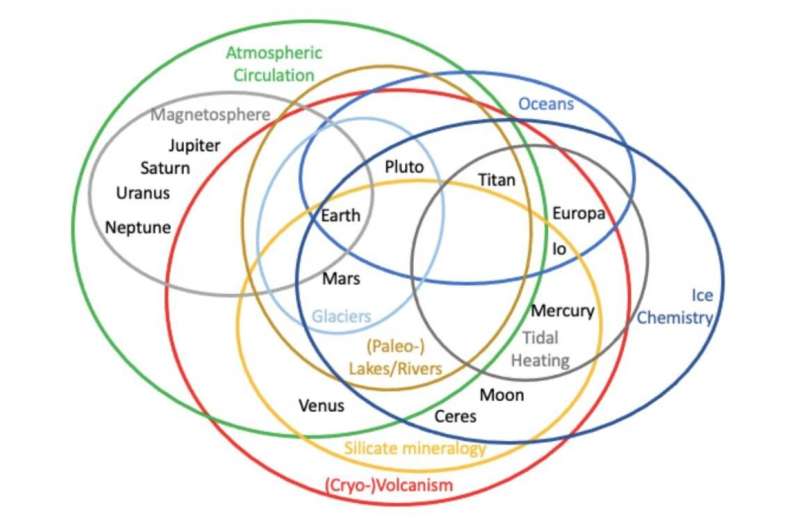
What makes a planet a planet? The answer turns out to be rather contentious. The official definition of a planet, as defined by the International Astronomical Union (IAU) is that a planet must satisfy three conditions:
- It must orbit the sun.
- It must be in hydrostatic equilibrium.
- It must have cleared its orbital neighborhood.
By this definition there are just eight planets in our solar system, most notably excluding Pluto. This has stirred all manner of controversy, even among astronomers. Several alternative definitions have been proposed, but a new study argues we should look to history for the solution.
The early definition of a planet was an object that moved against the stars over time. In historical astrology, there were stars, transitory objects such as comets, and planets. Thus, the sun and moon were considered planets, but not the Earth. With the rise of the heliocentric model, objects that orbit the sun were planets, meaning that Earth was a planet, but so was the moon. Throughout the 1600s and 1700s, this was the standard. When Galileo discovered four moons of Jupiter, he referred to them as the Medicean planets. When Cassini discovered Saturn's moon Titan, he referred to it as a new planet.
The use of "moon" as a general object also dates to this time. Galileo coined the term in 1632. For Galileo, a moon is a planet that orbits another planet, named after the first of that name. Planet and moon were not exclusionary terms. As Galileo demonstrated in 1611, stars shine of their own light, while planets only shine through reflected sunlight.
This simple definition held well into the 1800s. When astronomers discovered Ceres in 1801, it was clearly a planet. The same with Pallas, Juno, and Vesta. All were planets because they certainly weren't stars. But after a dozen worlds were found between Jupiter and Mars, many astronomers argued that they should be not planets, but asteroids.
This began a gradual shift to the idea that planets were large bodies orbiting the sun. Asteroids and moons should not be considered planets. When Pluto was discovered in 1930, it was clearly a planet because it was neither an asteroid nor a moon. But by the end of the 20th century, the simple definition became problematic. We found out that many large moons such as Io are geologically active. Titan has an atmosphere even thicker than Earth's. Pluto has mountains and complex geology but is even smaller than the moon. None of these meet the IAU definition of a classical planet, but it's hard to argue that they are not worlds as complex as Mars or Venus.
So what makes a planet a planet? Based on their work, the team argues that the IAU definition is a poor one. The general public dislikes it because the definition excludes Pluto, but more importantly, many scientists ignore the definition and still refer to bodies such as Titan, Pluto, Ceres, and others as planets. What seems to be the most consistent defining factor is that of complex geology and geophysics.
If we define planets by their geophysical qualities, then the Galilean moons are planets, as is Pluto, as is Pluto's moon Charon, as is our own moon. Anything with a diameter larger than about 500km would be a planet, meaning that our solar system alone has more than a hundred planets.
Explore further
Citation: Moons are planets too (2021, November 3) retrieved 3 November 2021 from https://phys.org/news/2021-11-moons-planets.html
This document is subject to copyright. Apart from any fair dealing for the purpose of private study or research, no part may be reproduced without the written permission. The content is provided for information purposes only.
Bagikan Berita Ini















0 Response to "Moons are planets too - Phys.org"
Post a Comment